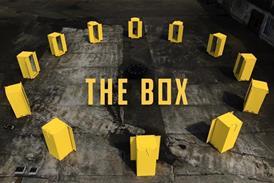Fears surrounding the supply of HD Cam SR tapes have stoked the debate around filebased delivery.
When it comes to delivering programmes for playout, the broadcast industry has hit the rewind button on recent technical advances, with most programmes delivered on HD Cam SR tape - even though an increasing number of shows are shot with a tapeless camera and edited in a file-based workflow.
The earthquake and tsunami that struck Japan in March, and the knock-on effect on manufacturing in the country, brought the industry’s reliance on the Sony format sharply into focus.
With the Sony factory not due to restart the production of SR tape until next month, the priority for broadcasters has been to secure enough tape stock to keep programmes on air, but the debate has moved on to broadcasters’ long-term plans for the file-based delivery of programmes.
The move towards a truly tapeless, end-to-end workflow has been planned for some time, but there are still some significant obstacles that need to be overcome. The key, according to Sohonet chief technical officer Ben Roeder, is the agreement of a common file standard.
“With tape, there is only one codec, so if it is a digibeta tape, it has a digibeta codec, and the same for HD Cam. But once you deliver a file in a container format like MXF, it can have JPEG, MPEG, MPEG2, MPEG1 and so on. Because there isn’t any standardisation, broadcasters don’t have the workflows in place.”
Adopting standards
The Digital Production Partnership (DPP), which comprises representatives from the BBC, ITV, Channel 4, Channel 5 and Sky, plans to release a basic specification for file-based delivery towards the end of July.
The DPP HD file format will be based on the AVCI standard and MXF-wrapped. Kevin Burrows, chief technology officer, broadcast and distribution, Channel 4, and the broadcaster’s lead at the DPP, describes it as a “futureproof, industry standard”.
“We’re also working on a metadata scheme, which will typically include the information found on a tape-based record report, with additional information such as editorial data, aspect ratio, audio track layouts, text, access services and product placement information,” he says.
As part of the process to agree a specification, the DPP is working with the Advanced Media Workflow Association to make some changes to the AS-03 standard, because it doesn’t support HD at the required profile. The new standard will be named AS-11, and the DPP is working on standardising the remaining data fields so that they are based on existing SMPTE, EBU and TV Anytime standards.
“All vendors currently support MXF and the key is to base it on an open standard - in our case, AVCI, which is already integrated by many vendors such as Panasonic and Avid,” says Burrows, adding that the format was chosen because it is an open standard.
One of the problems presented by internet-based delivery is confirmation that it has been received. Where a programme is delivered on a drive, similar processes to tape-based delivery are in place, but those that opt for FTP will need a record of delivery. The DPP’s guidelines won’t deal with the mechanism of the delivery but will include a check sum to establish whether a fi le is corrupted.
The issue of security when delivering over FTP is also something that is likely to be specifi c to each broadcaster. “In terms of receipts and confirmation of delivery, that really is a workflow issue,” says Burrows. “It is not something we have thought about in detail, but it might be something we could look at if it looks like it will be important to have.”
Early adopter
Earlier this year, Sky updated its programme delivery guidelines to include fi le-based delivery. Head of broadcast strategy John Lennon says the task of engaging with content suppliers to share technical formats was made easier because 85% of content comes from 18 key suppliers.
At the moment, only “a small percentage” of the 25,000 hours of programming that is delivered to Sky every year is delivered as files, but that will change by October, when Sky expects “wholesale” delivery of filebased programme content.
“Pretty much every supplier is up for file-based delivery because it is cheaper, faster and kinder to the environment,” says Lennon. “And for programmes that come from the US, it means we have the ability to get on air as soon as our rights deals allow.”
Sky asks productions to deliver programmes on AVC Intra 100 codec, with video encoded using Intra frame at 100Mbps, with 4:2:2 luminance and colour difference sampling ratio level 4.1, and a 10 bit sampling depth. Despite the stipulation, Lennon says Sky appreciates that it won’t always be possible for all programmes to be delivered according to the guidelines, but he wants deviations to be “the exception rather than the norm”.
Sky’s move to its Harlequin 1 building has provided the perfect opportunity to ditch legacy systems in favour of new kit and workfl ows. But many broadcasters still have tape-based kit that was installed less than ten years ago.
Michelle Munson, president and co-founder of California-based file transfer software firm Aspera, says there is a marked difference between the approach of broadcasters in the US and UK.
“Because there are more state broadcasters in Europe, the operation is typically very focused on long-term processes,” she says. “They often have systems they are adopting for many years to come and they have a very careful process of selection.”
It is not just the broadcasters that need to update their systems and practices. Steve Plunkett, director of innovation at Red Bee Media, says when his company moved into the Broadcast Centre in 2003, the intention was to be entirely file-based.
“We very quickly found ourselves having to build large tape ingest systems because the industry just wasn’t ready,” he says. “It’s difficult to overestimate the amount of legacy systems out there, such as production companies that work off tape and have found it difficult, commercially and from an expertise point of view, to move to filebased systems.”
As well as kit, working practices need to be updated because withoutany modification to the workflow, the benefits of moving away from tape won’t be realised. But implementing adjustments to the way people work is not always easy.
JCA commercial director Matt Bowman says fi rst and foremost, broadcasters need to pay the same qualitative attention to a file as they would to a tape.
“Often, file-based management becomes the domain of the IT department, but they aren’t always experts in video and those two departments need to be kept apart. In a broadcast environment, you have to be disciplined - you can’t, for example, drag and drop as you would in a consumer situation.”
Another problem posed by file-based workfl ows is keeping track of multiple changes and making sure multiple versions are brought back to one master copy. “Tape locked you into a linear process of editing, compliance, QC and so on, so everyone knew where the asset was,” says Plunkett.
But if it is done correctly, the main benefi t of a file, he says, is that it can be in a multitude of different places at the same time and worked on by different departments, potentially saving broadcasters both time and money.
Chello DMC on going tapeless
Chello DMC plays out 60 channels including Fox International Channels and 10 National Geographic and NatGeo Wild-branded channels in Amsterdam.
Jon Try, vice-president of technology, says almost all HD content arrives at the Amsterdam playout centre as files.
“Whenever we launch a channel, we try to set up a tapeless workflow,” he says. “We can’t tell clients [to go down that route], but we do say it’s better that way because it saves tape and delivery costs, and fits into our workflow more easily.
“A common standard is a good idea but, in practice, people already have a set standard for themselves and their suppliers - it needs to be something they can transition to relatively easily. We started out dictating what spec they delivered to us, but everyone has a different format. We have the ability to transcode so we can re-wrap it for TX if necessary.”






























No comments yet